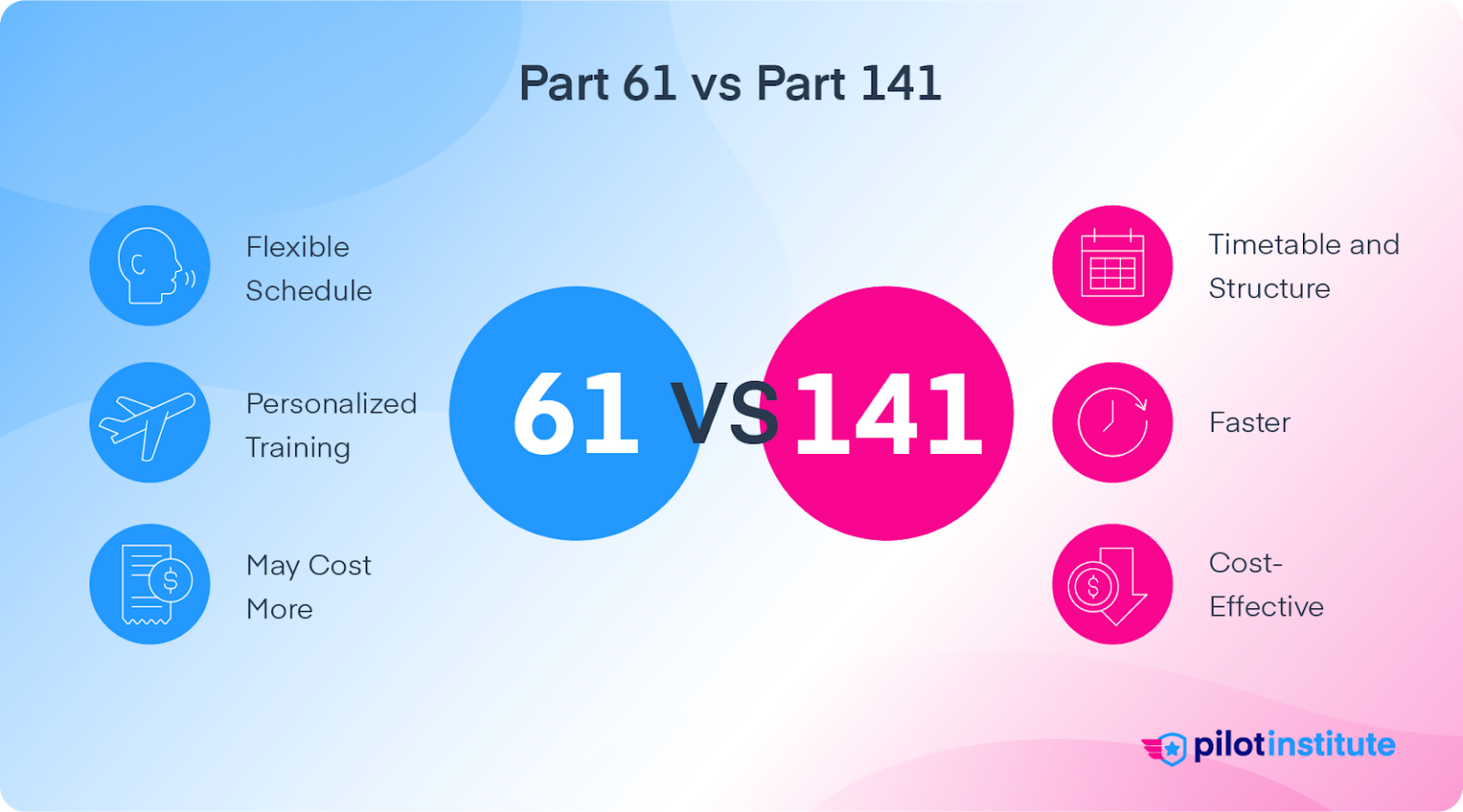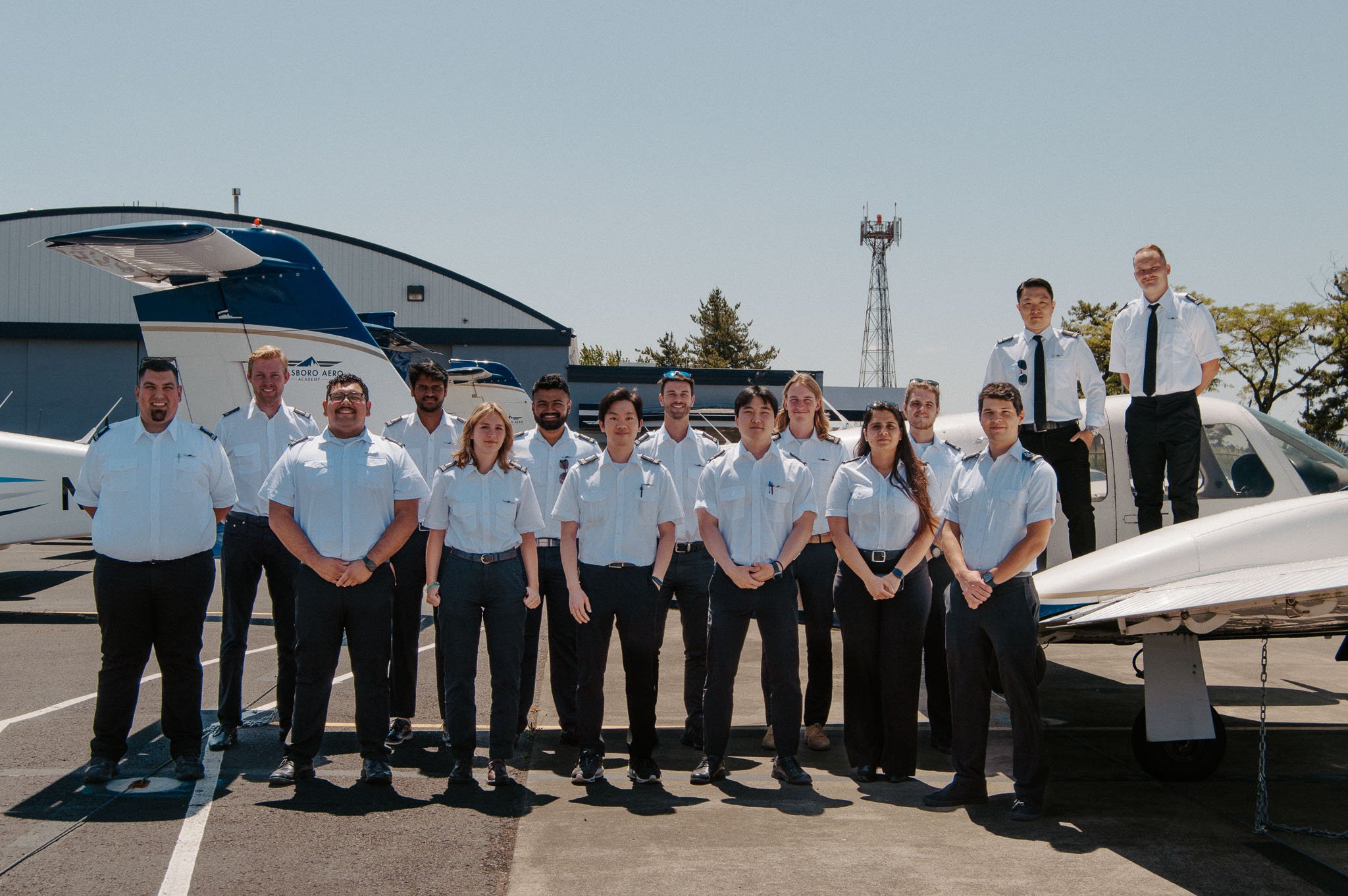Part 61 Vs 141 Flight School

The morning sun streamed through the hangar doors, illuminating a gleaming Cessna 172. Inside, a student pilot meticulously pre-flighted the aircraft, their brow furrowed in concentration. Another student, headset on, listened intently as an instructor reviewed weather patterns. The air buzzed with a unique blend of anticipation and focused energy, the very essence of flight training palpable. But beneath the surface of this shared passion lies a crucial decision for aspiring aviators: Part 61 or Part 141 flight school?
Navigating the world of flight training can feel like taxiing through a complex airport. The core question for any aspiring pilot is this: which path, Part 61 or Part 141, best aligns with their individual learning style, budget, and long-term aviation goals?
Let's explore the differences, benefits, and potential drawbacks of each approach.
The Regulatory Landscape: Understanding Part 61 and Part 141
The Federal Aviation Administration (FAA) governs all aspects of aviation in the United States. Their regulations are divided into different "Parts," each addressing a specific area.
Part 61 and Part 141 are the two primary frameworks under which flight schools operate.
Part 61: Flexibility and Individualization
Part 61 schools offer a more flexible and individualized approach to flight training. Students can progress at their own pace, tailoring the training to their specific needs and learning style.
Think of it as a customized, one-on-one apprenticeship. This allows students to choose their instructor, schedule lessons according to their availability, and learn in a less structured environment.
One of the most significant advantages of Part 61 is its flexibility. Students are not bound by a rigidly defined curriculum or syllabus. This means that training can be adjusted to accommodate a student's learning speed and individual strengths and weaknesses.
For example, if a student grasps maneuvers quickly, they can move on to more advanced topics sooner. Conversely, if a student needs more time to master a particular skill, the instructor can provide additional practice and guidance without being constrained by a strict schedule.
Another advantage is the ability to learn from various instructors. This can provide a broader perspective and expose the student to different teaching styles. You will also be able to utilize different aircrafts, if the school allows it.
However, this flexibility also requires more self-discipline and organizational skills from the student. Since the training is less structured, the student is responsible for staying on track and ensuring that all required topics are covered.
Part 61 often requires fewer formal record-keeping requirements for instructors, which can sometimes lead to inconsistencies in training documentation. While not inherently a negative, it necessitates careful communication and diligence from both the student and instructor to ensure that all training requirements are met.
Part 141: Structure and Accelerated Learning
Part 141 schools operate under a more structured and regimented system. They must adhere to an FAA-approved training syllabus, which outlines specific training objectives, flight hours, and ground school requirements.
This structured approach can be particularly beneficial for students who thrive in a more formal learning environment. It also can be beneficial for students who are looking to get their ratings quickly.
A key benefit of Part 141 is its emphasis on standardization. Instructors are required to follow a specific curriculum and use standardized teaching methods. This ensures that all students receive a consistent and comprehensive training experience.
Part 141 schools often have more resources available to students, such as sophisticated flight simulators, dedicated classrooms, and a larger pool of instructors. These resources can enhance the learning experience and provide students with a more comprehensive understanding of aviation principles.
Furthermore, Part 141 programs often qualify for reduced flight hour requirements for certain ratings, such as the Airline Transport Pilot (ATP) certificate. This can save students both time and money in the long run, especially for those pursuing a career as a commercial pilot.
However, the structured nature of Part 141 can also be a drawback for some students. The rigid syllabus may not be suitable for students who learn at a different pace or have specific learning needs. The lack of flexibility can also make it difficult to adjust the training to accommodate unexpected circumstances or personal preferences.
Students must meet specific stage check requirements and pass regular evaluations to progress through the program. This can create a more stressful learning environment for some students, especially those who are not accustomed to formal assessments.
Key Differences Summarized
Here's a quick comparison to highlight the main distinctions:
- Structure: Part 61 is flexible and individualized, while Part 141 is structured and regimented.
- Curriculum: Part 61 allows for a customized approach, while Part 141 follows an FAA-approved syllabus.
- Resources: Part 141 schools often have more resources available, such as simulators and dedicated classrooms.
- Flight Hours: Part 141 programs may qualify for reduced flight hour requirements for certain ratings.
Choosing the Right Path: Factors to Consider
The best choice depends on your individual circumstances and learning preferences.
Consider these factors when making your decision:
- Learning Style: Do you prefer a flexible, self-directed learning environment or a structured, regimented program?
- Budget: Part 61 can be more cost-effective for some, while Part 141 might offer faster completion times and potential hour reductions.
- Time Commitment: How much time can you dedicate to flight training each week? Part 141 often requires a more intensive time commitment.
- Career Goals: Are you pursuing a career as a commercial pilot? Part 141 may be beneficial for those seeking an ATP certificate.
- School Reputation and Instructor Quality: Research the reputation of both Part 61 and Part 141 schools in your area and seek recommendations from current or former students.
Talk to instructors and students at both types of schools. Take discovery flights to get a feel for the learning environment.
It's always best to do your homework.
The Bottom Line
Both Part 61 and Part 141 flight schools can provide excellent flight training. The key is to choose the path that best suits your individual needs and goals.
Carefully evaluate your learning style, budget, time commitment, and career aspirations. Research different schools, talk to instructors and students, and take discovery flights. Remember, the goal is to find an environment where you can learn effectively, safely, and enjoyably.
Ultimately, the journey to becoming a pilot is a personal one. Regardless of which path you choose, the dedication, hard work, and passion required to earn your wings will be the same. So, take the controls, embrace the challenge, and prepare for the adventure of a lifetime.



.jpg)














